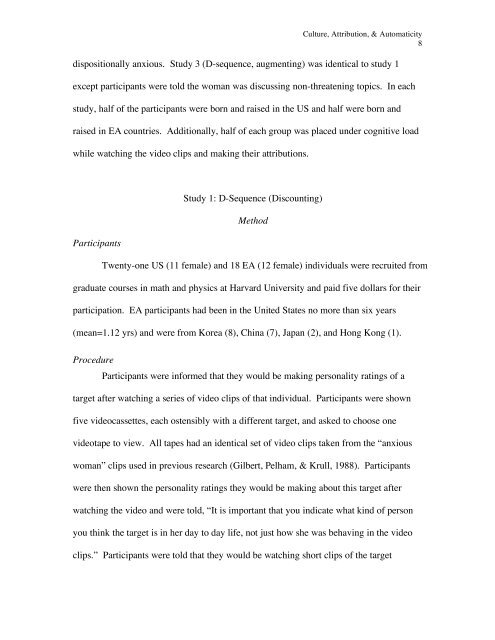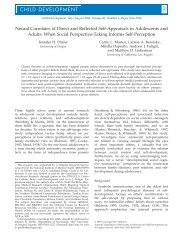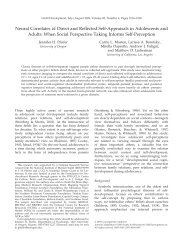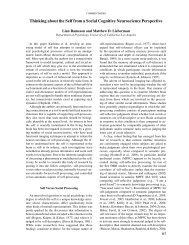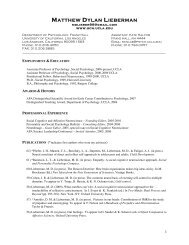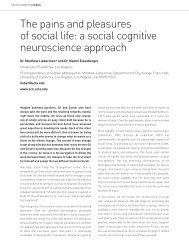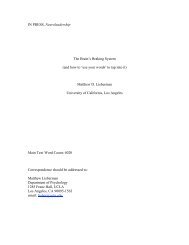In Progress – DO NOT CITE Attributional inference across cultures ...
In Progress – DO NOT CITE Attributional inference across cultures ...
In Progress – DO NOT CITE Attributional inference across cultures ...
You also want an ePaper? Increase the reach of your titles
YUMPU automatically turns print PDFs into web optimized ePapers that Google loves.
Culture, Attribution, & Automaticity<br />
8<br />
dispositionally anxious. Study 3 (D-sequence, augmenting) was identical to study 1<br />
except participants were told the woman was discussing non-threatening topics. <strong>In</strong> each<br />
study, half of the participants were born and raised in the US and half were born and<br />
raised in EA countries. Additionally, half of each group was placed under cognitive load<br />
while watching the video clips and making their attributions.<br />
Study 1: D-Sequence (Discounting)<br />
Method<br />
Participants<br />
Twenty-one US (11 female) and 18 EA (12 female) individuals were recruited from<br />
graduate courses in math and physics at Harvard University and paid five dollars for their<br />
participation. EA participants had been in the United States no more than six years<br />
(mean=1.12 yrs) and were from Korea (8), China (7), Japan (2), and Hong Kong (1).<br />
Procedure<br />
Participants were informed that they would be making personality ratings of a<br />
target after watching a series of video clips of that individual. Participants were shown<br />
five videocassettes, each ostensibly with a different target, and asked to choose one<br />
videotape to view. All tapes had an identical set of video clips taken from the “anxious<br />
woman” clips used in previous research (Gilbert, Pelham, & Krull, 1988). Participants<br />
were then shown the personality ratings they would be making about this target after<br />
watching the video and were told, “It is important that you indicate what kind of person<br />
you think the target is in her day to day life, not just how she was behaving in the video<br />
clips.” Participants were told that they would be watching short clips of the target


